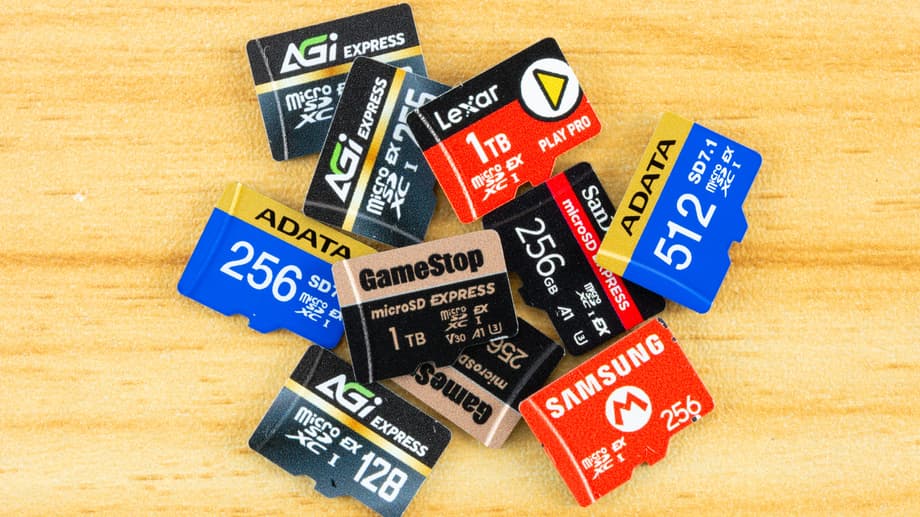A perfect storm hits consumers and retailers
Japan is confronting a broad storage crunch. Large microSD cards in the 512 GB, 1 TB, and 2 TB tiers are often missing from shelves in Tokyo computer districts, and high capacity hard drives are disappearing or climbing in price. Behind the scenes, a global surge in demand from artificial intelligence data centers is absorbing much of the world’s flash memory and DRAM. The result is fewer deliveries to retail, rapid price moves on memory kits, and shoppers who are turning to any storage that is still in stock.
- A perfect storm hits consumers and retailers
- Why Japan is seeing empty shelves for microSD and hard drives
- The AI gold rush behind the memory squeeze
- microSD Express promises speed, but compatibility is key
- Hard drive scarcity and the rise of QLC flash in data centers
- Memory prices surge from DDR5 to DDR4
- What shoppers can do right now
- Outlook for 2025 and beyond
- Highlights
The squeeze reaches beyond microSD and traditional hard disks. DDR5 memory prices in Japan have jumped quickly, with some kits nearly doubling within weeks, and some popular modules are hard to find. Retailers in Akihabara have begun limiting purchases of storage and memory to keep hoarding in check, and some distributors have paused or reduced shipments, citing low inventory and uncertain schedules.
Industry analysts point to a single driver for the shift. AI training and inference workloads require vast quantities of both memory and storage. Cloud providers and hyperscalers are locking in supply for years, leaving fewer parts for consumers. While graphics card pricing has been relatively steady in recent months, retailers expect that knock on effects from memory and storage tightness could reach GPUs later on.
Why Japan is seeing empty shelves for microSD and hard drives
On the ground in Tokyo, shoppers report repeated out of stock signs for larger microSD cards. The most sought after capacities are 512 GB, 1 TB, and 2 TB. These cards are used across phones, cameras, handheld gaming systems, drones, and tablets, so when other storage options become pricey or scarce, demand spills into microSD. The arrival of microSD Express cards, which use PCIe and NVMe protocols, has raised interest further by promising speeds closer to entry level SSDs.
Store staff say that restocks do arrive, but they sell through quickly. Price tags sometimes disappear from display cases when inventory runs dry, an unusual sight in a country known for orderly retail presentation. For many customers, a fast microSD card is a portable and simple way to expand a device without opening a chassis or carrying a separate enclosure.
Hard drives tell a similar story. Larger capacity models, the sort used in network attached storage or for video archiving, are frequently snapped up. Staff and wholesalers point to AI related purchases as a key reason. Even when new stock shows up, wholesale prices are higher, and retail tags follow. Consumers who had planned a mid year storage upgrade now face fewer options and a higher bill.
The AI gold rush behind the memory squeeze
The heart of the problem is scale. Modern AI training runs employ thousands of high performance accelerators, each with large amounts of memory. Models consume vast datasets, and that pushes demand for both the memory inside servers and the storage that feeds them. Training teams want to keep GPUs busy, which means building storage arrays with high throughput and enough capacity to hold huge corpuses of text, images, audio, and video.
On the supply side, producers have shifted more capacity to the most profitable lines. DRAM makers are pouring resources into HBM (High Bandwidth Memory) for AI accelerators. Industry watchers describe deals that aim to secure up to 900,000 wafers of DRAM per month for AI buildouts, a figure that would represent a very large share of global output if fully realized. Enterprise grade hard drives now carry lead times that can stretch toward two years. To avoid waiting, hyperscalers are buying large volumes of QLC NAND based SSDs for cold data, and some manufacturers say QLC production is booked well into 2026. All of this leaves little slack for consumer channels.
The shortage is amplified by the normal memory cycle. During the 2022 and early 2023 downturn, prices collapsed and vendors cut output. That drawdown cleared excess stock. When AI demand took off, inventories were thin, and prices rebounded quickly. With capital tied up in new AI focused product lines and geopolitical hurdles slowing fab expansion, the capacity relief that consumers want cannot arrive fast.
How AI workloads consume memory at scale
Training a large model requires feeding massive batches of data to many accelerators at once. Each GPU uses stacks of HBM, and host systems need DRAM to buffer and stage data. The storage layer must deliver high bandwidth and handle constant reads and writes to shuffle data, checkpoints, and logs. Even inference at scale requires large memory pools and fast caching to keep latency low for millions of queries. Each layer multiplies demand for the same pool of parts that also feeds the consumer market.
Why manufacturers prioritize HBM and high margin parts
HBM and leading edge DRAM carry higher selling prices than standard consumer modules. With limited clean room space and long lead times to add new tools, companies favor products that bring stronger returns. Some vendors are cautious about building new fabs too quickly, worried that a rapid expansion could be followed by a demand slump. That caution keeps supply tight for mainstream DRAM and NAND, which adds pressure to retail pricing.
microSD Express promises speed, but compatibility is key
microSD Express brings PCIe and NVMe protocols to the thumbnail sized card, pushing read speeds into the hundreds of megabytes per second. New cards like Samsung P9 advertise read speeds close to 880 MB per second, far ahead of the 150 MB per second ceiling of older UHS I cards. For handheld gaming and high resolution video capture, that bump matters.
Compatibility is the catch. Many devices still treat these cards as UHS I and cannot tap Express speeds. A microSD Express card will often run just fine in older slots, but performance falls back. Early adopters who own a device that supports the new mode will see the biggest gains. Others still benefit from newer controllers and NAND, but not the headline speeds. As fast cards get scarce, shoppers sometimes buy above their needs simply because that is what is on the shelf.
Where microSD can substitute for SSDs or HDDs
For archival files, handheld game libraries, action cameras, drones, and some single board computers, microSD can be a workable substitute. It is not a perfect stand in for a system SSD, since sustained heavy writes and random access workloads will favor true NVMe drives. For light duty storage, a quality microSD card with proper speed ratings can be a practical bridge until prices or stock improve.
Hard drive scarcity and the rise of QLC flash in data centers
Nearline hard drives, the big helium filled models that power cloud cold storage, are in short supply. With some enterprise buyers facing waits that extend across multiple quarters, cloud operators are deploying more QLC NAND SSD arrays to fill the gap. QLC stores four bits per cell, which lowers cost per gigabyte and fits read heavy, write light workloads often found in archival and content delivery tiers.
That pivot reshapes the consumer market. When hyperscalers absorb so much QLC, retail SSD supplies tighten and prices move up. If a vendor has already sold future output, it becomes harder for shops to secure inventory in the short term. Consumers then chase other options, including microSD or mid capacity hard drives, which spreads the shortage across categories.
Nearline HDDs versus consumer drives
Nearline drives run 24×7 in data centers and typically span 16 TB to 24 TB or more. They emphasize durability and predictable latency. Consumer drives often range from 1 TB to 12 TB, and while they share some parts with enterprise models, they are built for different duty cycles. When enterprise demand surges, production lines focus upstream, and the ripple effect reaches consumer shelves in the form of price increases and fewer discounts.
Memory prices surge from DDR5 to DDR4
DRAM follows the same pattern. DDR5, the current mainstream standard for new PCs, has seen sharp increases in Japan. Shoppers report that some kits have doubled in price in a matter of weeks. Even DDR4, which many expected to stay cheap as it phases out, is now climbing as manufacturers move capacity to DDR5 and to HBM for AI. A few vendors have restarted DDR4 lines, but not at levels that materially change availability.
Retailers in Akihabara and other hubs have responded with purchase limits to curb hoarding. Some shops cap each group at eight items. Others limit each buyer to two storage drives or SO DIMM modules and up to four memory sticks, with higher limits available only if a customer buys a complete PC. Stores say deliveries are smaller than expected, and some distributors have temporarily suspended shipments on specific models until supply stabilizes.
Retailers introduce purchase limits
These caps are meant to stretch limited stock across more customers and to discourage resellers who might scoop up all available units. The approach is a blunt tool, but it mirrors tactics used during past cycles of tight supply. In practice, it slows panic buying and gives shops time to reprice as wholesale costs change.
What shoppers can do right now
For consumers, the best approach is practical and patient. Buy only what you need, choose the right device for the task, and verify that what you are getting is genuine and properly specified. Prices can shift quickly in either direction, so plan purchases rather than reacting to every rumor.
Think in terms of workloads. If you need fast sustained writes for video editing or a boot drive for a workstation, a quality NVMe SSD remains the best choice. If your use is archival or a game library on a handheld, a reliable microSD card might be enough. For a home NAS, smaller drives in a RAID can be a temporary bridge if very large drives are out of stock or overpriced, though it may cost more bays and power.
Practical buying tips
- Match the device to the job. NVMe SSDs for operating systems and heavy apps, microSD for handhelds and cameras, HDDs for bulk storage where speed is secondary.
- Check speed ratings. For microSD, look for U3 or V30 for 4K video, A2 for app performance, and confirm whether your device supports microSD Express.
- Buy from trusted sellers. Counterfeit microSD cards are common in gray markets. Test new cards with verification tools to confirm real capacity and speed.
- Consider a USB SSD enclosure. Pairing a mainstream NVMe or SATA SSD with a quality USB case can deliver portable storage that is fast and often better value than a single high capacity microSD card.
- Avoid panic purchases. Shortages can tempt overbuying. Hoarding rarely helps and can push prices higher for everyone.
- Protect what you have. Keep firmware current, enable TRIM on SSDs, leave some free space to maintain performance, and ensure adequate cooling for high performance drives.
- Back up important data. A simple 3 2 1 backup plan reduces the risk of data loss if a drive fails during a time when replacements are expensive or scarce.
Ways to stretch existing storage
- Archive rarely used files to lower cost media or cloud cold storage tiers.
- Clean large downloads, duplicate photos, and old project folders. Simple housekeeping can free hundreds of gigabytes.
- Transcode high bitrate videos to more efficient codecs if quality needs allow.
- Use storage tiering. Keep active files on SSDs and move older content to HDDs or external drives.
Outlook for 2025 and beyond
Price relief is unlikely to be quick. Building new fabs and expanding tool capacity takes years, not quarters. Vendors are prioritizing enterprise orders and AI focused parts, which means consumer products often come second. Industry forecasts suggest that tight supplies for NAND flash, DRAM, and large hard drives could extend into 2026, with spot shortages persisting even as some new lines ramp.
One short term shift is already visible. Nearline HDD delays are accelerating the move to QLC SSDs for cold storage, and that change is pulling more NAND into data centers. Some manufacturers expect QLC to surpass TLC in popularity toward the middle of the decade. If that timeline holds, consumer SSD pricing will be tied even more directly to cloud demand swings.
Graphics card pricing has been steadier than memory and storage in 2025, but it is not isolated from the same forces. If DRAM and NAND stay expensive and supply chain costs rise, board makers and retailers could pass higher costs along over time. Gamers and creators should watch memory market trends, not only GPU announcements, when planning upgrades in 2026.
Highlights
- Large microSD cards and high capacity HDDs are frequently out of stock in Japan, with prices rising.
- AI data centers are absorbing DRAM and NAND supply, leaving less inventory for retail channels.
- Nearline hard drives face long lead times, pushing hyperscalers toward QLC NAND SSDs for cold storage.
- DDR5 prices in Japan have climbed fast, with some kits doubling within weeks, and DDR4 is also affected.
- Akihabara retailers have introduced purchase limits on SSDs, HDDs, and memory to prevent hoarding.
- microSD Express offers higher speeds, but many devices still fall back to UHS I performance.
- Consumers can bridge the gap with careful buying, verification of genuine parts, and smart storage management.
- Analysts expect constrained supply and elevated prices for NAND, DRAM, and large HDDs into 2026, with enterprise buyers prioritized.












